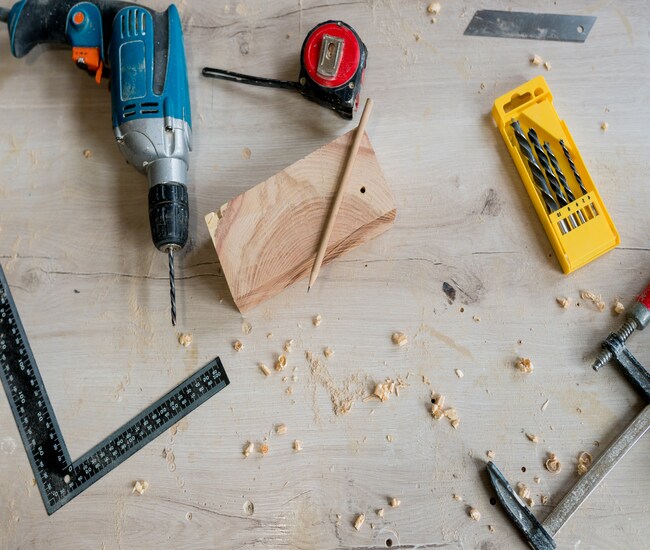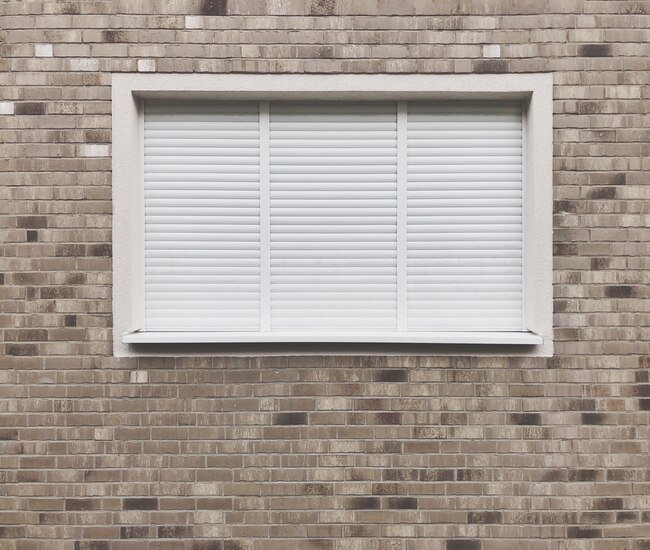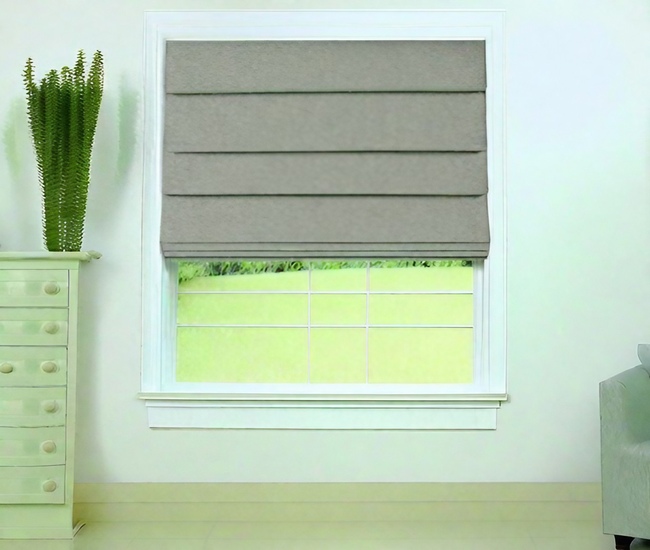Looped, soft fold, hobbled & waterfall Roman shades feature a series of soft, cascading folds that flow down the fabric when the shade is lowered. They are a stylish and practical option for window treatments, and add a traditional look to contemporary interiors design styles. Here’re easy DIY options to make hobbled or waterfall roman shades along with their pros and cons.
Roman shades are one of the most popular window treatments for all types of windows and interior décor styles. One of the reasons they fit any décor is that they come in lots of styles, such as soft fold or hobbled, flat fold, plain classic fold, European relaxed fold, and front slat fold. Hobbled Roman shades offer extra curb appeal.
Scroll on to learn more about these window treatments.
What is a Hobbled Shade?

Also known as tear drop Roman shade, waterfall Roman shade, soft fold Roman shades, hobbled Roman shade is a type of window covering that combines the classic look of Roman shades with the soft folds of drapery.
A hobbled shade is constructed with loops of fabric that create a soft, rippled effect down the length of the fabric. Hobbled fabric features soft cascading folds that are neatly arranged at the top and continue down the window when the blind is closed.
What is the difference between classic and hobbled Roman shades?
Unlike flat or classic Roman shades for windows that create a smooth and streamlined look when fully extended, hobbled Roman shades feature cascading folds that produce a more textured and layered appearance. The folds of these window treatments are created by horizontal battens or dowels sewn into the fabric material. These battens pull your Roman shade up into neat, evenly spaced pleats when you raise it.
Hobbled Roman shades for windows are available in a variety of fabrics, colors, styles, and patterns. Also, they can be lined with blackout material for added light control and privacy. These window coverings are often used in living rooms, dining rooms, and bedrooms, where you need a cozy and elegant atmosphere.
Are Hobbled Roman Shades Safe for Children and Pets?

You can make your hobbled Roman shades safe for children and pets by replacing lift cords with cordless lift systems, such as top-down bottom-up, motorized, and smart lifts.
How to Make a Hobbled & Waterfall Roman Shade – Easy DIY Steps
Creating a hobbled or soft fold roman shade is a little complicated. The first thing you need to understand is how the soft, cascading folds of hobbled roman shades are created. Also make sure to integrate a cordless operation mechanism if you have young children or pets in your home.
Here are easy DIY steps to make a soft fold or hobbled Roman shade that will contain 10” of fabric and 6” of lift per hobble and will finish at 37” (width) x 64” (height):
Tool and Materials You’ll Need

- A large piece of soft, thick Roman fabric
- Classic napped lining (made of a combination of a cotton sateen face and a woven interlining back)
- Plastic Roman shade ribs
- Upholstery thread
- Hand sewing needles
- A pair of scissors
- Painter’s tape
- Screwdriver
- Screws (for installation)
- Wood board
- Erasable fabric marking pen
- A straight edge ruler
- 6” Plastic sew-on rings
- ⅜” staples
- Fabric tubing for ⅜” steel rods
10 DIY Steps to Make Hobbled Shades
- Step 1: Measure and mark off the table top for the hobbled Roman shade’s finished width (37”) and length (64”) using the painter’s tape.
- Step 2: Lay the classic napped fabric over tape on the table top, face down.
- Step 3: Fold in sides to meet tape lines, and mark 2” from each side, trimming the extra fabric.
- Step 4: Lay the layer of lining facing up. Trim it to tape size and turn back 1” on both sides.
- Step 5: Mark the shade for lift – first row of rings 5.5” up from the bottom and second one 3.5” up from the first mark.
- Step 6: Cut a 10” inches piece of stiffener and fold it onto itself to form a double-layered 5” piece. Insert it between the face fabric and the lining, tucking it into the bottom hem area.
- Step 7: Measure ribs to 36” (i.e. finished width of lining minus 1”) and slide them into rib tape that’s about 2” wide than the hobbled Roman shade.
- Step 8: Tuck empty end of the rib tape into the (classic napped) lining.
- Step 9: Measure and mark lift tube every 6” inches, matching those marks to the shade ribs.
- Step 10: Install cords, running them through the rings and into the orb. Attach cords to the lift system.
- Note: For child-safety, add a cordless lift system to your hobbled shades.
Pros and Cons of Hobbled Roman Shades
There are lots of advantages of hobbled Roman shades. For example, they exude extra curb appeal to boost their interior décor style. However, like any other window treatment, hobbled Roman shades do have some disadvantages.
Here are some pros and cons of hobbled Roman shades for windows:
Pros
Beautiful Look
Hobbled Roman shades provide a classic and elegant look to your room. The cascading folds of their fabric give a soft and luxurious feel to your room’s interior.
Light Control

These Roman shades can be folded, unfolded, or adjusted midway to control the amount of light entering your room. By adjusting the vanes, you can filter the sunlight or block it out completely.
Insulation

Hobbled Roman shades provide insulation for your room’s windows. The hobbled fabric layers trap air between the window and the shade, reducing heat gains in the summer and heat loss in the winter.
Versatility
Hobbled Roman shades for windows are available in a great variety of colors, fabrics, sizes, styles, and lift options. This makes them a versatile window treatment option that can complement any interior decor style.
Cons
When a hobbled Roman shade is fully lowered, its cascading folds of fabric can obstruct the view to the outside. This can be disadvantageous if you want to enjoy a clear view of the outside scenery.
Difficulty in Cleaning

Hobbled Roman shades for windows can be challenging to clean, as the soft folds of fabric material can accumulate dust, dirt, or grime. So, you need to take special care to clean them.
Relatively Expensive
Compared to other types of Roman shade styles, hobbled Roman shades can be a relatively expensive option. However, the cost depends on the fabric, style, and size of the hobbled Roman shade.
Cost
Summing up, hobbled Roman shades for windows are an aesthetically appealing and functional window treatment option. They provide a luxurious appearance, light control, and insulation. However, they do have some drawbacks, like limited visibility, difficulty in cleaning, and higher cost.
FAQs
What is the downside to Roman shades?
- Roman shades do not provide 100% light control.
- They are not as good at providing insulation as cellular shades.
- An expensive (though beautiful!) option to cover windows.
What is the best material to make Roman blinds?
100% cotton is the best material to make Roman blinds, as it’s breathable and helps keep a room cool. Other popular fabric options for flat fold, soft fold or hobbled roman blinds include polyester/cotton blinds, linen, blended linen, which will not only add a stunning look to your window treatment but also provide durability and longevity.
Need More Help?
Still unsure about how to make hobbled & waterfall Roman shades and if they are fit for your unique settings? Get in touch for help now! Use 24/7 live chat or give us a call at (800) 863-6109 to contact our design experts for custom or DIY solutions.
